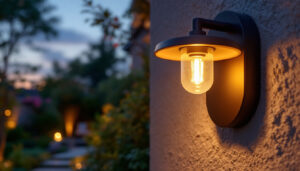

Lighting contractors play a crucial role in ensuring safety and compliance in various environments. Among the essential components of their work are exit lights, which serve as vital indicators for safe evacuation during emergencies. This article explores the significance of exit lights, their installation, maintenance, and the latest trends that can simplify the process for lighting contractors.
Exit lights, also known as emergency exit signs, are illuminated signs that indicate the nearest exit in a building. They are designed to be easily recognizable and visible, even in low-light conditions. The primary function of exit lights is to guide occupants safely out of a building during emergencies, such as fires or power outages. These signs are typically marked with a green or red symbol, often featuring a running figure, which helps convey the message quickly and effectively, even to those who may not be fluent in the local language.
The importance of exit lights cannot be overstated. They are not only a legal requirement in many jurisdictions but also a critical component of building safety. In the event of an emergency, clear and visible exit signage can significantly reduce panic and confusion, allowing for a more orderly evacuation. Studies have shown that well-placed exit lights can lead to quicker evacuations, potentially saving lives in critical situations.
Moreover, exit lights contribute to the overall safety culture of a facility. They signal to occupants that their safety is a priority, which can enhance trust and confidence in the management of the premises. Regular maintenance and testing of these lights are essential to ensure they function correctly when needed, reinforcing the message that safety is a continuous commitment rather than a one-time effort. In addition, educating staff and occupants about the location and significance of exit lights can further enhance preparedness during emergencies.
There are several types of exit lights available, each designed for specific applications and environments. The most common types include:
In addition to these common types, there are also specialized exit signs designed for unique environments, such as outdoor settings or hazardous locations. For instance, weatherproof exit signs are essential for outdoor use, ensuring visibility in various weather conditions, while explosion-proof exit signs are necessary in industrial settings where flammable materials are present. Each type of exit light is crafted to meet specific safety standards, ensuring they perform effectively in their intended applications.
Installing exit lights requires careful planning and adherence to local codes and regulations. Lighting contractors must consider various factors to ensure that the exit signs are effective and compliant.
The placement of exit lights is crucial for their effectiveness. They should be installed above all designated exits and at strategic locations throughout the building, such as hallways and stairwells. The general guideline is to ensure that occupants can see the exit signs from a distance of at least 100 feet.
Additionally, exit lights should be positioned at a height that is easily visible and not obstructed by furniture or other objects. In some cases, it may be necessary to install additional signs to guide occupants through complex layouts. For instance, in larger facilities like shopping malls or office complexes, directional exit signs may be needed to lead people towards the nearest exit, especially in areas where multiple paths converge. This ensures that individuals can make quick decisions during emergencies, minimizing confusion and panic.
Different jurisdictions have specific regulations regarding exit lights, including their design, placement, and illumination levels. Familiarity with local building codes is essential for lighting contractors to ensure compliance and avoid potential penalties.
Furthermore, contractors should stay updated on any changes to safety regulations, as these can impact the installation and maintenance of exit lights. Regular training and workshops can be beneficial in keeping abreast of industry standards. It’s also important to consider the type of lighting technology used; for example, LED exit signs are becoming increasingly popular due to their energy efficiency and longevity. These modern fixtures not only reduce energy costs but also provide brighter illumination, enhancing visibility in low-light conditions. As technology evolves, integrating smart lighting solutions that can adapt to emergency situations may also become a vital consideration for future installations.
Proper maintenance of exit lights is vital for ensuring their functionality during emergencies. Regular inspections and testing can prevent failures and ensure compliance with safety regulations.
Lighting contractors should establish a routine inspection schedule for exit lights. This includes checking the illumination levels, ensuring that the signs are clean and free of obstructions, and verifying that the battery backup systems are functioning correctly.
During inspections, it is also important to check for any signs of physical damage or wear. Any issues should be addressed promptly to maintain the integrity of the exit lighting system.
Testing exit lights should be part of the maintenance routine. This typically involves conducting monthly tests to ensure that the lights illuminate properly and that battery backups are operational. A more comprehensive annual test should also be conducted to assess the overall functionality of the system.
Documentation of these tests is essential for compliance and can serve as proof of maintenance for inspections by regulatory bodies.
The landscape of exit lighting technology is evolving, offering new solutions that can simplify the work of lighting contractors. Understanding these trends can lead to more efficient installations and enhanced safety features.
Smart exit lighting systems are gaining traction in the industry. These systems can be integrated with building management systems, allowing for real-time monitoring and control. For contractors, this means easier management of multiple exit lights and quicker identification of any issues that may arise.
Smart systems can also provide valuable data analytics, helping contractors optimize maintenance schedules and improve overall safety strategies.
As sustainability becomes a priority in construction, energy-efficient exit lighting solutions are increasingly popular. LED exit signs, for example, consume significantly less energy than traditional incandescent options, leading to lower operating costs and a reduced carbon footprint.
Contractors should consider recommending energy-efficient solutions to clients not only for their cost-saving benefits but also for their positive impact on the environment.
While exit lights are essential for safety, lighting contractors face several challenges in their installation and maintenance. Understanding these challenges can help contractors develop strategies to overcome them.
In buildings with complex layouts, determining the optimal placement of exit lights can be challenging. Contractors must navigate obstacles such as multiple floors, unusual architectural features, and varying occupancy levels.
Utilizing advanced design software can assist in visualizing the layout and identifying the best locations for exit signs. Collaborating with architects and engineers during the design phase can also lead to more effective solutions.
Budget constraints can limit the options available for exit lighting systems. Contractors often need to balance safety requirements with client budgets, which can lead to compromises in quality or compliance.
Educating clients on the importance of investing in reliable exit lighting solutions can help mitigate these challenges. Providing cost-benefit analyses and highlighting the long-term savings associated with quality installations can also be persuasive.
To ensure the successful installation and maintenance of exit lights, lighting contractors should adopt best practices that enhance efficiency and compliance.
Staying informed about the latest regulations, technologies, and best practices is essential for lighting contractors. Continuous education and training can provide valuable insights and skills that improve service delivery.
Participating in industry workshops, webinars, and certification programs can enhance knowledge and foster professional growth. Networking with other professionals in the field can also lead to valuable exchanges of ideas and experiences.
Effective communication with clients is vital for understanding their needs and expectations. Contractors should take the time to explain the importance of exit lights, the installation process, and maintenance requirements.
Providing clear documentation and reports can also help build trust and transparency. Regular updates on inspections and maintenance can reassure clients that their safety is being prioritized.
Exit lights are an indispensable component of building safety, and their proper installation and maintenance are crucial for ensuring compliance and protecting occupants. For lighting contractors, understanding the significance of exit lights, staying informed about regulations, and adopting best practices can simplify the process and enhance service delivery.
By embracing new technologies and trends, contractors can streamline their operations and provide clients with effective and reliable exit lighting solutions. Ultimately, prioritizing safety and compliance will lead to a successful and sustainable business in the lighting industry.
Ready to elevate your lighting projects with the best in exit lighting technology? Look no further than LumenWholesale, where we provide lighting contractors with the highest quality, spec-grade lighting products at unparalleled wholesale prices. Our commitment to cutting out the middleman means you get the most cost-effective solutions for your safety lighting needs. With our wide selection of reliable exit lights, free shipping on bulk orders, and no hidden fees, you can ensure every project shines with excellence. Don’t compromise on quality or value; visit LumenWholesale today and experience the ultimate in affordability and convenience for all your wholesale lighting needs.

Discover the essential guide for lighting contractors on mastering waterproof electrical connectors.

Discover the top LED lights revolutionizing warehouse illumination and enhancing efficiency for lighting contractors.

Discover why solar lanterns are becoming a game-changer for lighting contractors.

Discover essential tips for selecting industrial LED bulbs and learn how to sidestep common pitfalls in lighting projects.
Get notified when NEW deals are released.
Optimize your budget with wholesale discounts.
Only top-quality, specification-grade lighting products.
No additional costs at checkout - what you see is what you pay.
We understand the unique needs of contractors.